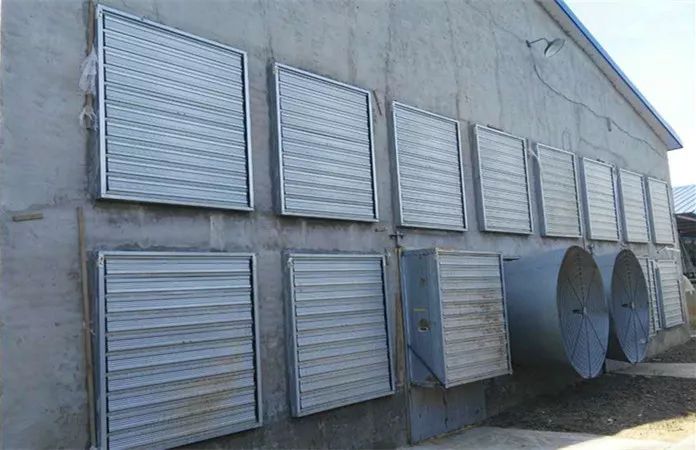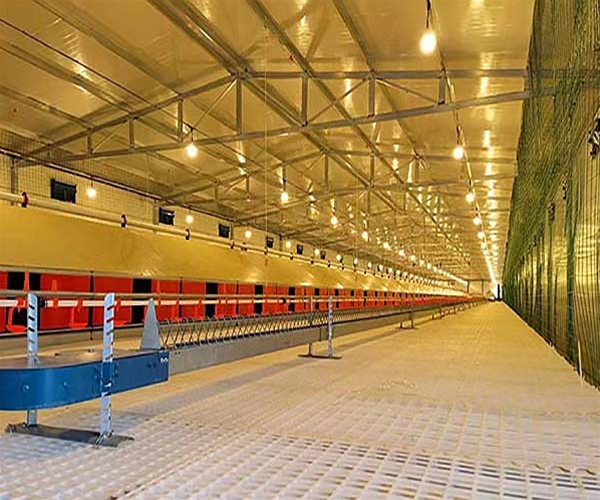With the rise of large-scale poultry farming, modernized poultry houses equipped with automated systems for water supply, feeding, egg collection, ventilation, temperature control, and cooling have become the norm. Among these, efficient ventilation systems, especially fans, play a crucial role in maintaining optimal conditions for poultry health and productivity. This article dives deep into fan selection, calculation, installation, and practical use in modern poultry houses.
Understanding Fan Structure
A fan typically consists of the following components:
- Frame: Available in fiberglass, galvanized steel, or PVC.
- Blades: Common materials include aluminum alloy and stainless steel.
- Shutter: Opens automatically when the fan is operational and closes when off, preventing dust, debris, and rain from entering.
- Protective Net, Motor, and Support Frame complete the assembly.
Fan Frame Materials:
- Fiberglass Fans: Durable (up to 20 years), resistant to heat, acids, and alkalis, but costlier.
- Galvanized Steel Fans: Affordable, widely used, but with a shorter lifespan (8–10 years).
- PVC Fans: Rarely used due to their fragility.
Transmission Methods:
- Belt Drive: Common; isolates the motor from blade issues.
- Direct Drive: More efficient (up to 10% higher airflow), quieter, but at risk of motor damage if blade malfunctions occur.
Key Fan Types for Modern Poultry Houses
- 36-Inch Side Fans:
- Diameter: 90 cm.
- Ventilation Rate: ~280 m³/min.
- 55-Inch Tunnel Fans:
- Diameter: 140 cm.
- Ventilation Rate: ~630 m³/min.
Custom fan sizes are also available to meet specific poultry house requirements.
Ventilation Modes in Poultry Houses
1. Natural Ventilation
No fans required; air flows freely through side vents. Suitable for mild climates.
2. Positive Pressure Ventilation
Fans blow fresh air into the house, creating positive pressure to expel stale air. Often used in winter with heating systems.
3. Negative Pressure Ventilation
The most common mode in modern poultry houses:
- Fans installed on one side expel air, creating negative pressure.
- Fresh air enters through inlets on the opposite side or via evaporative cooling pads.
4. Pipe Ventilation
Duct systems with outlets distribute air uniformly, ideal for cold weather and early-stage brooding.
Practical Tips for Fan Use and Maintenance
- Prevent Biofilm Accumulation: Regular cleaning of shutters and blades to maintain efficiency.
- Monitor Airflow: Inspect pressure and adjust fan speed based on flock needs.
- Spare Capacity: Always have backup fans installed to avoid disruptions.
- Match Fan Types to Seasons: Use side fans for mild ventilation and tunnel fans for cooling in summer.
Conclusion
Ventilation is essential in modern poultry farming. Accurate calculation, proper installation, and strategic use of fans can ensure optimal conditions, boosting flock health and farm productivity. Whether it’s side fans for ventilation or tunnel fans for cooling, always prioritize reliability and efficiency.
By understanding the principles outlined above, poultry farmers can effectively implement fan systems that meet the demands of their operations.


